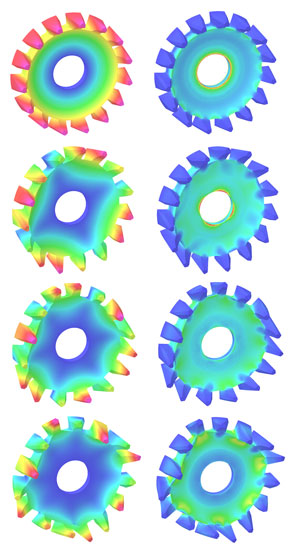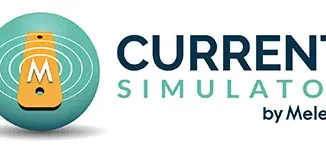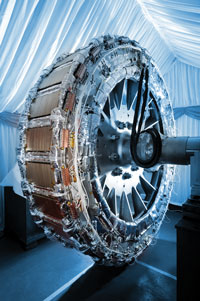Understanding eddy current effects is critical to improving the performance of many emergent electrical equipment applications, including high efficiency electric motors, generators and transformers. Cobham Technical Services has demonstrated that updates to its Opera-3d electromagnetics simulator now allow designers to model such transient effects extremely accurately. This fidelity of simulation gives Opera users a powerful means of exploring new design concepts and accurately predicting their impact – to bring new generations of highly optimized products to market, such as electric motors, generators, transformers, electromagnetic brakes and clutches.
The finite element analysis tools of Opera-3d have been designed to model transient phenomena in electromagnetic systems. Features such as hexahedral mesh elements provide the fine resolution needed for accurately simulating the complex fields that are generated in regions where eddy currents are induced, while mesh layering improves the accuracy of capturing skin-effect in regions subject to high levels of eddy currents.
Opera-3d software also incorporates an advanced time-transient solver, which employs a mix of fixed and adaptive time-stepping to ensure simulation accuracy of transient phenomena. The size of the step can be changed automatically during simulation to maintain the same level of accuracy throughout the simulation. At the start of simulation, when there are large initial transients, the solver uses short time-steps; then as the simulation progresses and the initial fast transients decrease, it progressively increases the step size until the transients have died down and the eddy currents are less significant, when it switches to a fixed duration step.
Cobham has recently validated its simulation results using ‘Problem 24’ – one of the Testing Electromagnetic Analysis Methods (TEAM) benchmarks that is endorsed by the International Compumag Society. This uses the simplified topology of a Switched Reluctance Motor (SRM), containing a single pair of rotor and stator teeth, with two stator coils. Unlike a real SRM, the stator and rotor are not laminated, allowing substantial eddy currents to be induced. The rotor is locked at a position of partial misalignment between the stator and rotor poles to increase the local saturation at the tip of the teeth, deliberately making it more difficult to predict and compute the field within the device.
The physical device used for comparison purposes is driven by a step voltage applied to the series-connected stator windings. During the test, four key parameters are measured: winding current, flux in the rotor tooth, flux density in the airgap and output torque. The rotor flux is measured with a search coil and the airgap flux density with a Hall effect probe.
The validation exercise was performed with and without electrical conductivity in the model, to evaluate the effect of eddy currents on simulation accuracy. When eddy currents are omitted from the analysis, the simulation results indicated that when a step voltage is applied, the rotor flux reaches its maximum at the same time as the drive current. However, this response is delayed by 0.08 s when eddy currents are included, because their flow opposes the change in flux linking the coil. This significant difference in transient response is most evident when looking at torque output – the effect of eddy currents delays the production of full torque by as much as 0.1 s.
There is a high degree of correlation between the results produced by Opera-3d and the enhanced electromagnetic transient solver for the ‘Problem 24’ TEAM benchmark, and measurements from the physical device. During the first 0.08 seconds of the applied step voltage, the simulated rotor tooth flux, airgap flux density and torque output data are essentially the same as those obtained by measurement. After the initial transient, the error between the measured and simulated flux linkages is less than 2 percent.
A case study discussing the importance of including eddy currents in electromagnetic analyses, which highlights the results of applying Opera-3d to the TEAM Problem 24 benchmark is available at: http://operaFEA.com/case-studies. Users can also download a full description of the modelling and analysis methods used for the benchmark.



